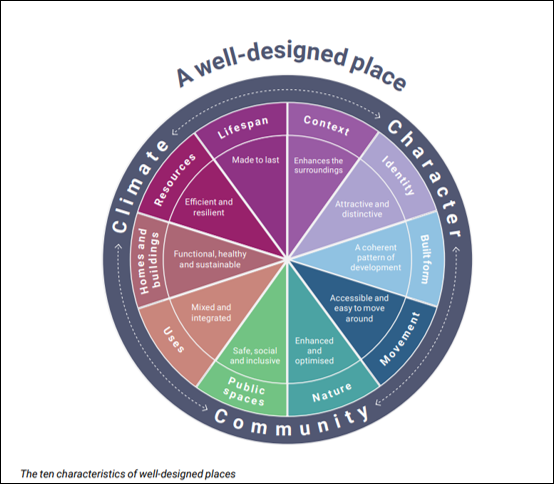About this page
How this part of the Local Plan Options Document works
These Development Management policy option pages contain the following sections:
Policy background
- Relevant national policy or regulations
- National or regional trends
- Local situation and needs/li>
- How we have dealt with this issue in the past
- The thinking behind the policy
Policy options for the new Local Plan
We may suggest a variety of approaches:
- Keeping existing policy as it is
- Making small changes
- Replacing the policy with something that is substantially different
- Identifying factors or events which may affect this policy in the future
Policy option analysis
- A list of the advantages and disadvantages that we have identified for each of the policy options we are presenting.
Read the Heritage and Design Topic Paper for in-depth focus about this topic, and the evidence which informs our policy. Visit our library of Local Plan Options supporting documents to learn more.
Explore the policy
Select a section below to read more.
9.371 The delivery of well-designed places is a key consideration set out within the NPPF. Section 2 - Achieving sustainable development notes the planning system has three overarching objectives, paragraph 8 b) which sets out the ‘Social objective’ notes the following:
'To support strong, vibrant and healthy communities, by ensuring that a sufficient number and range of homes can be provided to meet the needs of present and future generations; and by fostering well-designed, beautiful and safe places, with accessible services and open spaces that reflect current and future needs and support communities’ health, social and cultural well-being.’
9.372 The NPPF further sets out the approach to design under Section 12. Achieving well-designed places. Paragraph 131 is of key consideration and notes the following:
‘The creation of high quality, beautiful and sustainable buildings and places is fundamental to what the planning and development process should achieve. Good design is a key aspect of sustainable development, creates better places in which to live and work and helps make development acceptable to communities. Being clear about design expectations, and how these will be tested, is essential for achieving this. So too is effective engagement between applicants, communities, local planning authorities and other interests throughout the process.’
9.373 Paragraph 132 is also of consideration and sets out the following:
‘Plans should, at the most appropriate level, set out a clear design vision and expectations, so that applicants have as much certainty as possible about what is likely to be acceptable. Design policies should be developed with local communities so, they reflect local aspirations, and are grounded in an understanding and evaluation of each area’s defining characteristics. Neighbourhood planning groups can play an important role in identifying the special qualities of each area and explaining how this should be reflected in development, both through their own plans and by engaging in the production of design policy, guidance and codes by local planning authorities and developers.’
9.374 The West of England Combined Authority and the four West of England Unitary Authorities worked together through 2020 to develop a Placemaking Charter in dialogue with stakeholders. The Charter sets out a shared ambition for the quality of development in the West of England and communicate the authorities’ priorities and expectations to support clean, inclusive growth, responding to the climate and ecological emergencies.
9.375 At a local level design review, policy support, consultation and training for the South West is provided by Design West. Design West brings together expertise from across the built and natural environment sectors. The service is independent and not-for-profit working collaboratively with the development sector and decision-makers to shape better places.
9.376 Policy D1 sets out the general urban design principles that will be applied at a high level. These are particularly relevant for large development sites or Masterplans but apply equally to all development scales.
9.377 The detailed background and evidence relating to the following options is set out in the Heritage and design Topic Paper.
9.378 The policy remains fit for purpose. The policy broadly aligns with the National Design Guide 10 characteristics of good design, which reflects the government’s priorities and provides a common overarching framework for design.
Figure 71: The ten characteristics of well-designed places Source - National Design Guide 2021
9.379 Going forward as part of the new local plan the policy approach will be updated and amended to better reflect the National Design Guide 10 characteristics of good design, the B&NES Corporate Plan and priorities and WECA Placemaking Charter.
Option A
Retain policy D1 with updates and amendments as outlined above.
Advantages of Option A
Adopted policy presents no significant issues or concerns arising from dvelopment management officers in its implementation. No evidence to suggest major changes are required.
Disadvantages of Option A
Non identified.

